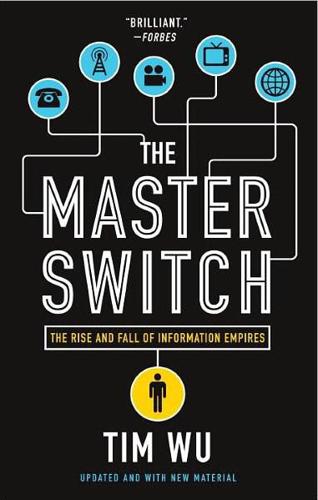
The Master Switch: The Rise and Fall of Information Empires
by
Tim Wu
Published 2 Nov 2010
This one from the October 14, 1940, edition of The New York Times is typical: PHONE TALK ANNOYS? HUSH-A-PHONE PREVENTS. DEMONSTRATION EITHER TYPE PHONE. HUSH-A-PHONE CORP., CHELSEA, 3–7202. If the Hush-A-Phone never became a household necessity, Tuttle did a decent business, and by 1950 he would claim to have sold 125,000 units. But one day late in the 1940s, Henry Tuttle received alarming news. AT&T had launched a crackdown on the Hush-A-Phone and similar products, like the Jordaphone, a creaky precursor of the modern speakerphone, whose manufacturer had likewise been put on notice. Bell repairmen began warning customers that Hush-A-Phone use was a violation of a federal tariff and that, failing to cease and desist, they risked termination of their telephone service.2 Leo Beranek and the Hush-A-Phone Was AT&T merely blowing smoke?
…
To close their case, the Hush-A-Phone team offered dramatic demonstration to rival O.J.’s bloody glove. Tuttle called his secretary and asked her to speak into a telephone receiver, first with, then without the Hush-A-Phone attached. In accordance with Licklider’s findings, the device did indeed alter the acoustics of the telephone transmission, making it sound more “boomy.” Yet, as was evident to all, the speech remained intelligible. The Hush-A-Phone, in other words, indubitably worked. ONE MIND OR MANY? Bell was right about one thing at least: the Hush-A-Phone wasn’t terribly popular, and it showed few signs of catching on.
…
Lippincott, 1956), 19–20. CHAPTER 7: THE FOREIGN ATTACHMENT 1. Leo Beranek supplied a copy of Hush-A-Phone’s letterhead. The product was the subject of an article in Popular Mechanics, February 1941, 230. 2. Much of the Hush-A-Phone story is based on interviews with Leo Beranek and on his autobiography, Riding the Waves: A Life in Sound, Science, and Industry (Cambridge, MA: MIT Press, 2008), 91. The hearing and appeal may be found respectively at “In the Matter of Hush-A-Phone Corp. et al., Decision,” 20 FCC 391 (1955), and Hush-A-Phone v. U.S., 238 F.2d 266 (D.C. Cir. 1956). 3. The early voice mail machine is described in Mark Clark, “Suppressing Innovation: Bell Laboratories and Magnetic Recording,” Technology and Culture vol. 34, no. 3 (1993): 516, 529. 4.
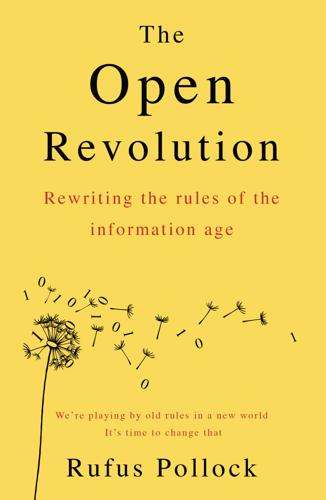
The Open Revolution: New Rules for a New World
by
Rufus Pollock
Published 29 May 2018
A company that was sitting on one of the safest, soundest, government-guaranteed monopolies in the world did not want anyone muscling in on any part of its operation, however peripheral, and even if it didn’t offer any equivalent. After a five-year delay, the FCC issued a ruling that the Hush-a-Phone was indeed “deleterious to the telephone system and injures the service rendered by it”, so AT&T had the right to forbid it, and devices like it. And there the case might have rested, so dooming the internet even before it was conceived. Really? The internet and the Hush-a-Phone are utterly different. Yes, but they share two key common features. First, both can be construed as attachments to the phone network. No one was going to buy a Hush-a-Phone silencer without a phone that could make calls. And the internet has to send its data either down wires – metal or optical cables – or as electromagnetic waves through the air or through space.
…
As for connectivity, for most of the 20th century telephony was regulated by governments through effective monopolies, which did their utmost to resist encroachment, as in the David and Goliath story of Henry Tuttle and America’s gigantic corporation AT&T. Mr. Henry Tuttle was the proud inventor of a telephone silencer, unpromisingly called the Hush-a-Phone. It was a large plastic cup that you attached to the speaking end of a telephone handset so that no one around you could hear what you were saying. Mr. Tuttle had been in business for years when, in the late 1940s, he received the alarming news that devices like his were to be forbidden by AT&T, on the basis of an obscure provision of its agreement with the government which stated: No equipment, apparatus, circuit or device not furnished by the telephone company shall be attached to or connected with the facilities furnished by the telephone company, whether physically, by induction, or otherwise.
…
One might have imagined this was a minor affair concerning an obscure product not in competition with the phone company and bought by a tiny minority of its customers. But AT&T showed up in force: dozens of attorneys plus a bevy of expert witnesses and top-level executives. Tuttle had only himself, his lawyer, and two acoustic professors from Harvard. For AT&T this case was not about the Hush-a-Phone but about the principle of connecting to the phone system. And behind that, something much bigger was at stake: who had control. For if Mr. Tuttle were allowed to do what he did, then they might also have to allow all sorts of other innovations to be connected, and if lots of people could do things uncontrolled and unsupervised by AT&T, there was a potential danger.

Exploding the Phone: The Untold Story of the Teenagers and Outlaws Who Hacked Ma Bell
by
Phil Lapsley
Published 5 Feb 2013
Apparently weren’t exactly 2,600.” 156 the network expanded from there: Author interviews of Acker, Teresi, and Fettgather. 157 The Machine, VERMONT, Z, ZZ, ZZZ, Superphone: For history and recordings of the Machine and other Los Angeles telephone joke lines see “Phone Recordings, Los Angeles Area & Beyond,” at http://www.dialajoke.us/. 158 weren’t allowed to connect: See the Carterfone case discussion in chapter 20. 158 “The national switched telephone network”: John D. deButts quoted in Steve Coll, The Deal of the Century: The Break Up of AT&T (New York: Atheneum, 1986), p. 105. 158–159 Hush-A-Phone: “Phone Company Upheld in Ban on Hush-A-Phone,” New York Times, February 17, 1951, p. 29 <db1018>; “Hush-A-Phone Hits Back at AT&T,” New York Times, March 24, 1951, p. 25 <db1019>; “Phone Device Ban by AT&T Upheld,” New York Times, December 24, 1955 <db1020>, p. 20; “Court Removes Ban Against Phone Device,” New York Times, November 9, 1956, p. 25 <db1021>; and 238 F.2d 266, HUSH-A-PHONE CORPORATION and Harry C. Tuttle, Petitioners, v. UNITED STATES of America and Federal Communications Commission, Respondents, American Telephone and Telegraph Company et al., and United States Independent Telephone Association, Interveners, No. 13175, United States Court of Appeals, District of Columbia Circuit, 99 U.S.
…
AT&T didn’t like it; tariffs were passed that made it a violation to use a telephone with “any device not furnished by the phone company.” AT&T threatened to disconnect the telephone service of both vendors and users of the Hush-A-Phone for violating these rules. Hush-A-Phone Corporation complained to the Federal Communications Commission in 1948. In 1951 the FCC decided in favor of the telephone company. Hush-A-Phone objected; briefs were filed. The FCC took the matter “under advisement” for four more years. In late 1955 the communications commission officially sided with AT&T, saying that this sinister rubber widget was “deleterious to the telephone system and injures the service rendered by it” because its use sometimes “results in a loss of voice intelligibility, and also has an adverse affect on voice recognition and naturalness.”
…
A faulty telephone in one house could conceivably disrupt service to an entire city. A system such as the switched telephone network is only as good as its weakest component.” This logic extended not just to telephone lines but to telephones themselves. Consider the case of the Hush-A-Phone. This was a product first manufactured in the 1920s by, you guessed it, the Hush-A-Phone Corporation. It was not a sophisticated electrical circuit that connected up to Ma Bell’s fragile network. No, it was a molded rubber cup that fit over the telephone mouthpiece. It allowed you to whisper into your phone and thus gain a little bit of privacy from your house or office mates; you can think of it as the rubber widget equivalent of cupping your hand between your mouth and the telephone to keep others from hearing you.

The Future of the Internet: And How to Stop It
by
Jonathan Zittrain
Published 27 May 2009
It found that at least in cases that were not “publicly detrimental”—in other words, where the phone system was not itself harmed—AT&T had to allow customers to make physical additions to their handsets, and manufacturers to produce and distribute those additions. AT&T could have invented the Hush-A-Phone funnel itself. It did not; it took outsiders to begin changing the system, even in small ways. Hush-A-Phone was followed by more sweeping outside innovations. During the 1940s, inventor Tom Carter sold and installed two-way radios for companies with workers out in the field. As his business caught on, he realized how much more helpful it would be to be able to hook up a base station’s radio to a telephone so that faraway executives could be patched in to the front lines.
…
As his business caught on, he realized how much more helpful it would be to be able to hook up a base station’s radio to a telephone so that faraway executives could be patched in to the front lines. He invented the Carterfone to do just that in 1959 and sold over 3,500 units. AT&T told its customers that they were not allowed to use Carterfones, because these devices hooked up to the network itself, unlike the Hush-A-Phone, which connected only to the telephone handset. Carter petitioned against the rule and won.5 Mindful of the ideals behind the Hush-A-Phone decision, the FCC agreed that so long as the network was not harmed, AT&T could not block new devices, even ones that directly hooked up to the phone network. These decisions paved the way for advances invented and distributed by third parties, advances that were the exceptions to the comparative innovation desert of the telephone system.
…
Yoo, Network Neutrality and the Economics of Congestion, 94 GEO. L.J. 1847, 1878—79 (2006); Kevin Werbach, The Federal Computer Commission, 84 N.C. L. REV. 1, 18—22 (2005). 3. See Hush-A-Phone v. United States, 238 F.2d 266 (D.C. Cir. 1956). 4. Id. at 269. 5. See Use of the Carterfone Device in Message Toll Tel. Serv, 13 F.C.C. 2d 420 (1968). The FCC held that there was “no material distinction between a foreign attachment such as the Hush-A-Phone and an interconnection device such as the Carterfone… so long as the interconnection does not adversely affect the telephone company’s operations or the telephone system’s utility for others.”
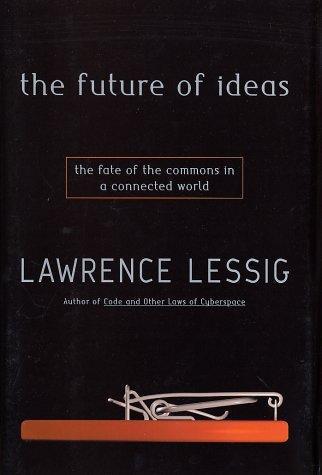
The Future of Ideas: The Fate of the Commons in a Connected World
by
Lawrence Lessig
Published 14 Jul 2001
It was a crime to attach a device to the telephone system that AT&T didn't build or expressly authorize. In 1956, for example, a company built a device called a “Hush-a-Phone.” The Hush-a-Phone was a simple piece of plastic that attached to the mouthpiece of a telephone. Its design was to block noise in a room so that someone on the other end of the line could better hear what was being said. The device had no connection to the technology of the phone, save the technology of the plastic receiver. All it did was block noise, the way a user might block noise by cupping his hand over the phone.18 When the Hush-a-Phone was released on the market, AT&T objected. This was a “foreign attachment.”
…
This was a “foreign attachment.” Regulations forbade any foreign attachments without AT&T's permission. AT&T had not given Hush-a-Phone any such permission. The FCC agreed with AT&T. Hush-a-Phone was history. Hush-a-Phone is an extreme case.19 The real purpose of the foreign attachments rule was, at least as AT&T saw it, to protect the system from dirty technology. A bad telephone or a misbehaving computer attached to the telephone system could, AT&T warned, bring down the system for the whole region. Telephones were lifelines, and they had to be protected from the experiments of an inquisitive nation. Rules such as the foreign attachments rules were intended to achieve this protection.
…
., Telephone Almanac, foreword (1941). 16 Interview with Paul Baran. 17 Ibid. 18 Peter Huber, Orwell's Revenge: The 1984 Palimpsest (New York: Free Press; Toronto: Maxwell Macmillan Canada; New York: Maxwell Macmillan International, 1994), 268-69; Huber, Kellogg, and Thorne, 416. 19 And the decision was reversed by the D.C. circuit. Hush-a-Phone Corp. v. United States, 238 F. 2d 266 (D.C. Cir., 1956). 20 The idea is developed in Kleinrock's dissertation: Leonard Kleinrock, Message Delay in Communication Nets with Storage (1962, unpublished Ph.D. dissertation, Massachusetts Institute of Technology), which was later published in a modified form.
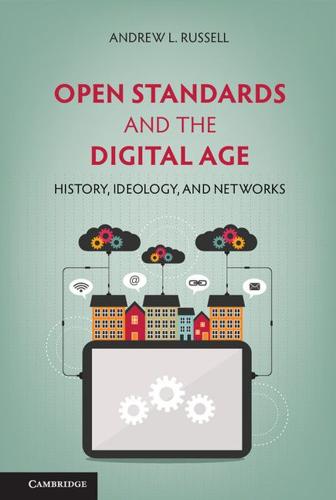
Open Standards and the Digital Age: History, Ideology, and Networks (Cambridge Studies in the Emergence of Global Enterprise)
by
Andrew L. Russell
Published 27 Apr 2014
As a result, a flood of entrepreneurial competitors entered niche markets that had been dominated by AT&T and Western Electric.12 Entrepreneurs, who had been attempting to create new products and new markets at the boundaries of the Bell System since its formation, renewed their efforts after the end of World War II. An initial attack on AT&T’s right to control attachments to the telephone network came in 1948, when the Hush-A-Phone Corporation filed a complaint against AT&T to establish the legal right to attach their cuplike device to telephone handsets. Two acoustic scientists – the Boston entrepreneur Leo Beranek and the Harvard researcher J. C. R. Licklider – testified that the Hush-A-Phone would not endanger the technical capabilities of the Bell System.13 Despite the testimony of Beranek, Licklider, and other communications experts, the FCC remained steadfast in its support of AT&T’s end-to-end control over the American communications system.
…
As FCC decisions protected these firms from the dual threats of AT&T’s dominance and federal regulation, they and dozens of other start-up firms raised capital, created new high-tech products, and struggled to learn the nuances of competing in the shadow of regulatory uncertainty, commercial risk, and rapid technological change. These trends were fueled by time-sharing systems in the academic computing research community, particularly at MIT.19 Subsequent challenges to AT&T’s control over the interfaces of the telephone network followed the same pattern established by the Hush-A-Phone case in the mid-1950s and the Computer Inquiry begun in 1966: an entrepreneur would first introduce a new service or device, then encounter resistance from AT&T, and finally look to the FCC and the courts to challenge AT&T’s authority. Lawsuits from Thomas Carter (filed 1965, decided 1968) and Microwave Communications, Inc.
…
Steve Coll, The Deal of the Century: The Breakup of AT&T (New York: Simon & Schuster, 1986), 59. 13 Both men would later figure in the development of network technologies: Beranek as one namesake of the firm, Bolt Beranek and Newman, that built equipment for the Arpanet; and Licklider as a critic of AT&T and an inspiration for a generation of packet-switching researchers. 14 Hush-A-Phone Corp. v. United States, 238 F.2d 266 (1956); Henck and Strassburg, A Slippery Slope, 32–67. 15 Bernard Strassburg, interview by James Pelkey, Washington, D.C., May 3, 1988, courtesy of James Pelkey. See also Bernard Strassburg, “The Marriage of Computers and Communications – Some Regulatory Implications,” 9 Jurimetrics Journal (September 1968): 12–18; and Henck and Strassburg, A Slippery Slope, 126–142. 16 Strassburg interview.

Where Wizards Stay Up Late: The Origins of the Internet
by
Katie Hafner
and
Matthew Lyon
Published 1 Jan 1996
Attachment of foreign (non-Bell) equipment to Bell lines was forbidden on the grounds that foreign devices could damage the entire telephone system. Everything added to the system had to work with existing equipment. In the early 1950s a company began manufacturing a device called a Hush-A-Phone, a plastic mouthpiece cover designed to permit a caller to speak into a telephone without being overheard. AT&T succeeded in having the Federal Communications Commission ban the device after presenting expert witnesses who described how the Hush-A-Phone damaged the telephone system by reducing telephone quality. In another example of AT&T’s zeal, the company sued an undertaker in the Midwest who was giving out free plastic phone-book covers.
…
Gore, Al graphics interactive Gulf Oil hacking creative vs. malicious Harvard University IMP Number Nine at Psycho-Acoustic Laboratory at Hawaii, University of Header People header wars Hearn, Tony Heart, Frank background and education of at BBN computer systems engineering of design reviews of family life of IMP proposal work of at Lincoln Laboratory perfectionism and design concerns of personality and work habits of as project manager of IMP design team team work and loyalty of tools and systems management techniques of Heart, Jane Henderson, Austin HERMES Herzfeld, Charles Hewlett-Packard Hill, Albert holographic images Honeywell BBN relations with computers built by, see DDP-516 computer; Honeywell-316 computer Honeywell-316 computer hospitals, computer technology for Hughes Aircraft Hush-A-Phone IBM (International Business Machines Corporation) computers built by IBM cards IBM IBM IBM 7094 computer ideal auditory detection ILLIAC IV computer Illinois, University of Center for Advanced Computation at IMP Guys IMP-Number 0 BBN specifications for debugging of delivery and testing of initial failure of IMP Number One BBN specifications for problems with rewiring and debugging of shipping and delivery of Sigma-7 interface with synchronizer problems with IMP Number Two IMP Number Three IMP Number Four IMP Number Five IMP Number Fifteen IMPs, see Interface Message Processors IMPs Numbers information superhighway Infoworld, intercontinental ballistic missiles Interface Message Processors (IMPs) BBN awarded contract for BBN design and construction of checksum requirements for competitive bids sought for debugging of error-control system of function of handling of I/O traffic by hardware of phasing out of problems and challenges of proposals submitted for prototype of, see IMP Number 0 routing issues and self-sufficiency measures of software requirements of status reports compiled by telephone line transmission with test programs and performance checks for verification of message reception by International Business Machines Corporation see IBM International Conference on Computer Communication (ICCC) International Geophysical Year International Network Working Group (INWG) International Organization for Standardization (ISO) Internet commercial uses of definition of roots of, see ARPANET Internet Engineering Task Force Internet Protocol (IP) Internet Society Interop interstate highway system INWG (International Network Working Group) IP (Internet Protocol) Johnson, Lyndon Johnson, Roy Joint Services Advisory Committee (JSAC) Joy, Bill Justice Department, U.S.

The End of Ownership: Personal Property in the Digital Economy
by
Aaron Perzanowski
and
Jason Schultz
Published 4 Nov 2016
Arlo Gilbert, “The Time That Tony Fadell Sold Me a Container of Hummus,” Medium, April 3, 2016, https://medium.com/@arlogilbert/the-time-that-tony-fadell-sold-me-a-container-of-hummus-cb0941c762c1#.nhl96qogu, accessed April 10, 2016. 10. “Apple Reinvents the Phone with iPhone,” Apple Press Info, Apple Inc., January 9, 2007, http://www.apple.com/pr/library/2007/01/09Apple-Reinvents-the-Phone-with-iPhone.html, accessed September 7, 2015. 11. Ibid. 12. Hush-A-Phone Corp. v. United States, 238 F.2d 266 (D.C. Cir. 1956). 13. See, e.g., Andrew “bunnie” Huang, Hacking the Xbox: An Introduction to Reverse Engineering (San Francisco: No Starch Press, 2003); MythTV, https://www.mythtv.org/, accessed September 7, 2015. 14. See “First Jailbreaks by Device and iOS Version,” in “iOS Jailbreaking,” Wikipedia, last modified September 6, 2015, https://en.wikipedia.org/wiki/IOS_jailbreaking, accessed September 7, 2015. 15.
…
Gerstein, 196 Gutenberg, Johannes, 36, 38, 203 Hamlet, 59 HarperCollins, 109 Harrison v. Maynard, Merrill & Co. HathiTrust, 117, 224 Hegel, Georg, 22 HeinOnline, 86, 212 Hesse, Thomas, 136 Higgins, Parker, 230 Hoofnagle, Chris Jay, 214 Houweling, Molly Shaffer Van, 198 Huang, Andrew “bunnie Hulu, 48–49 Humphrey, Watts S., 209 Hush-A-Phone Corp. v. United States, 227 IBM, 40, 62–63 Image Comics, 85–86, 212 In re Cliffdale Assocs., Inc., 214 Information costs, 7–10, 17–21, 74, 81, 187–190 Infringement, 12, 22, 27, 40, 45, 47, 50, 75, 97, 118, 123, 130, 155, 162, 164, 176–179, 183–185 Institute of Electrical and Electronics Engineers (IEEE), 186 Intangible property.
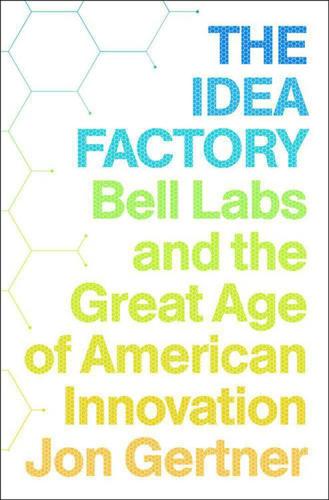
The Idea Factory: Bell Labs and the Great Age of American Innovation
by
Jon Gertner
Published 15 Mar 2012
Department of Justice, and the FCC are compelling but highly involved; moreover, because those legal tangles were often unrelated (or indirectly related) to the science and engineering of Bell Labs, they are not fully detailed here. Some of the competition to the Bell System dates back to the 1950s and 1960s, to cases involving two independent companies and their devices, Hush-a-Phone and Carterfone. Hush-a-Phone was an attachment to a handset’s mouthpiece that allowed customers to talk or whisper into the phone with more confidentiality; Carterfone was a device that allowed mobile radios to be tied into the landline network. AT&T contended that both could conceivably harm the network, an assertion that was ultimately proven unfounded.

The Innovators: How a Group of Inventors, Hackers, Geniuses and Geeks Created the Digital Revolution
by
Walter Isaacson
Published 6 Oct 2014
You couldn’t connect anything to your phone line, or even to your phone, unless Ma Bell leased it to you or approved it. Although AT&T offered some modems in the 1950s, they were clunky and costly and designed mainly for industrial or military use, rather than being conducive to homebrew hobbyists creating virtual communities. Then came the Hush-A-Phone case. It involved a simple plastic mouthpiece that could be snapped onto a phone to amplify your voice while making it harder for those nearby to overhear you. It had been around for twenty years, causing no harm, but then an AT&T lawyer spotted one in a shopwindow, and the company decided to sue on the absurd ground that any external device, including a little plastic cone, could damage its network.
…
., ref1, ref2 Hayes Smartmodem, ref1 Heart, Frank, ref1 “Heath Robinson,” ref1 Heinlein, Robert, ref1, ref2 Hells Angel, ref1 Hennessy, John, ref1 Herschel, John, ref1 Hertzfeld, Andy, ref1 Herzfeld, Charles, ref1, ref2, ref3 Hewlett, William, ref1, ref2, ref3, ref4 Hewlett-Packard, ref1, ref2, ref3, ref4, ref5, ref6, ref7, ref8 High Performance Computing Act (1991), ref1, ref2 Higinbotham, William, ref1 Hilbert, David, ref1, ref2, ref3, ref4, ref5, ref6 Hiltzik, Michael, ref1 Hingham Institute Study Group, ref1 hippies, ref1, ref2, ref3, ref4, ref5 Hiroshima, ref1n His Majesty’s Government Code and Cypher School, ref1 Hitler, Adolf, ref1, ref2 Hoddeson, Lillian, ref1 Hodges, Andrew, ref1 Hoefler, Don, ref1 Hoerni, Jean, ref1, ref2, ref3, ref4 Hoff, Ted, ref1, ref2 Hofstadter, Douglas, ref1 Holberton, Betty Snyder, see Snyder, Betty Hollerith, Herman, ref1, ref2 Homebrew Computer Club, ref1, ref2, ref3, ref4, ref5, ref6, ref7, ref8, ref9, ref10 Home Terminal Club, ref1 Honeywell, ref1, ref2, ref3, ref4 Hoover Dam, ref1 Hopper, Grace, ref1, ref2, ref3, ref4, ref5, ref6, ref7, ref8 communication skills of, ref1, ref2 on ENIAC’s lack of programmability, ref1 hired at Eckert-Mauchley, ref1 subroutines perfected by, ref1 Hopper, Vincent, ref1 HotWired, ref1 HotWired.com, ref1 Hourihan, Meg, ref1 House, David, ref1 House of Lords, ref1, ref2 Huffington, Arianna, ref1 Huffington Post, ref1 Human Brain Project, ref1 Human-Computer Interaction Group, ref1 human-machine interaction, ref1, ref2, ref3, ref4, ref5, ref6, ref7, ref8, ref9, ref10, ref11, ref12, ref13, ref14, ref15, ref16 Hush-A-Phone case, ref1 hydrogen bomb, ref1, ref2 HyperCard, ref1 hypertext, ref1, ref2 limitation of, ref1 Hypertext Markup Language (HTML), ref1, ref2, ref3, ref4 Hypertext Transfer Protocol (HTTP), ref1 IAS Machine, ref1 IBM, ref1, ref2, ref3, ref4, ref5, ref6, ref7, ref8, ref9, ref10, ref11, ref12, ref13, ref14, ref15, ref16, ref17 dress code at, ref1 founding of, ref1 Gates’s deal with, ref1 Jobs’s criticism of, ref1 Mark I history of, ref1, ref2 Mark I of, ref1, ref2, ref3, ref4 IBM 704, ref1 IBM 1401, ref1 Idea Factory, The (Gertner), ref1 Illich, Ivan, ref1, ref2 imitation game, ref1 incompleteness theorem, ref1, ref2 indeterminacy, ref1 individualism, ref1 Industrial Revolution, ref1, ref2, ref3, ref4, ref5 two grand concepts of, ref1 Infocast, ref1 Information Processing Techniques Office (IPTO), ref1, ref2, ref3, ref4, ref5 Information Sciences, Inc.

The Code: Silicon Valley and the Remaking of America
by
Margaret O'Mara
Published 8 Jul 2019
.: Cambridge University Press, 1987); Katherine Maxfield, Starting Up Silicon Valley: How ROLM became a Cultural Icon and Fortune 500 Company (Austin, Tex.: Emerald Book Co., 2014). The precedent at work in the Carterfone decision was the 1956 Hush-A-Phone case, which ruled in support of a company that manufactured popular telephone receiver attachments that kept a user from being overheard. The Hush-A-Phone was a nonmechanical attachment to a telephone handset, however, not a self-powered electronic device like the Carterfone. See Nicholas Johnson, “Carterfone: My Story,” Santa Clara Computer & High Technology Law Journal vol. 25, no. 3 (2008): 677–700.
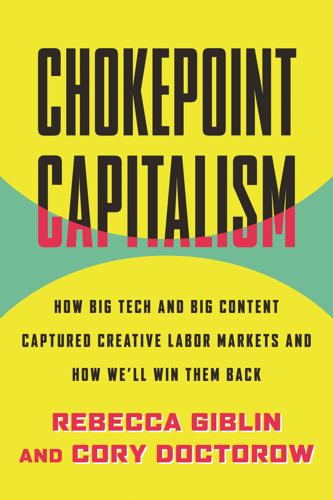
Chokepoint Capitalism
by
Rebecca Giblin
and
Cory Doctorow
Published 26 Sep 2022
Jonathan Tepper and Denise Hearn, The Myth of Capitalism: Monopolies and the Death of Competition (Hoboken, NJ: Wiley, 2019), 15. 46. Aaron Mak, “How Facebook Tried to Make Itself Antitrust-Proof,” Slate, Dec. 9, 2020, https://slate.com/technology/2020/12/facebook-antitrust-ftc-breakup-whatsapp-instagram-zuckerberg.html. 47. Jasper L. Tran, “The Myth of Hush-A-Phone v. United States,” IEEE Annals of the History of Computing 41, no. 4 (2019): 6n33. 48. Paul Keller, “Article 17, the Year in Review (2021 edition),” Kluwer Copyright Blog, Jan. 24, 2022, http://copyrightblog.kluweriplaw.com/2022/01/24/article-17-the-year-in-review-2021-edition. 49. Susan Wojcicki, “YouTube Chief Says EU Copyright Plan Could Lead to Blocked Access,” Financial Times, Nov. 12, 2018, https://www.ft.com/content/266e6c2a-e42e-11e8-a8a0-99b2e340ffeb. 50.